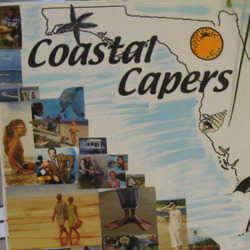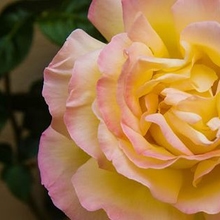Growing plants and entering flower shows is a challenging experience for many people. In a flower show schedule, there are many different sections in the horticulture division. Cut flowers of annuals, cut flowers of perennials, cut flowers or colorful bracts of bulbous plants, cut branches of trees and shrubs, and many other kinds of plants may make up the sections in a flower show.
A section for combination plantings is often one of the most misunderstood. A bit of education is in order if you intend to enter a combination planting. According to the definitions formulated by National Garden Clubs, three types of combination plantings may be entered in a Standard Flower Show.
 Planter
Planter
A planter is a group of plants grown in an indoor or outdoor container. It is not a landscape, so accessories are not permitted. Planters can be in any type of container, but the container should be compatible with the plants selected, and in proportion to the plant material. Plants should be chosen that are compatible and grow well together. Plants can be all foliage, all flowering, or a combination of both.
Dish Garden
By NGC standards, a dish garden is a miniature landscape in an open container. Since it is a landscape, it can include one or more accessories. Accessories may be such items as rocks, pathways, driftwood, figurines, etc. Items are chosen to convey the idea of a miniature landscape. Many times, these landscape gardens may follow a theme, such as a Japanese garden, rock garden, a desert scene, or a woodland garden.
Terrarium
A terrarium, too, is a miniature landscape. However, it is in a transparent container, such as a small conservatory or greenhouse. Gardens may be in fish bowls, tanks, or other types of transparent containers. According to NGC rules, terrariums do not have to be covered. However, all plant material should be contained within it.
A Few Rules
Exhibitors need to be aware of a few general rules before they enter a combination planting in a flower show.
- Combination plantings must have been growing together and in the exhibitor's possession for at least six weeks prior to exhibiting.
- Container-grown plant combinations should have similar cultural requirements.
- Exhibitors should consider the immediate effect of each plant, as well as the ultimate size.
- Exhibitors should choose a variety of leaf shapes and foliage colors to add interest and contrast in color, form, size, pattern, and texture. By the same token, they should remember that too much contrast destroys unity. Somewhere between too little and too much is a delicate balance.
After the exhibitor follows the rules and enters a combination planting in a flower show, a 3-member panel of judges assesses it based on an established scale of points and places ribbons if merited. It helps the exhibitor to think like a judge and to have some idea of the evaluative process. Judges consider several things when they judge a combination planting. 
 Are all plants correctly identified with scientific names? Can the judge tell from the label or entry card which plant is which in the combination planting? Is the identifying card neatly written and easily read?
Are all plants correctly identified with scientific names? Can the judge tell from the label or entry card which plant is which in the combination planting? Is the identifying card neatly written and easily read?- Does the combination planting conform to the schedule requirements as well as NGC rules? For instance, if a planter has an accessory, a deduction would be made because a planter is not a landscape. Does the exhibit follow the size requirement, and any other schedule limitations?
- Are plants and accessories well placed? Do they seem to be crowded, or is there too much space between plants?
- Do the plants seem compatible as far as colors, form, sizes, and textures?
- Is the planting unified, and is there an overall cohesiveness of harmonious colors, forms, sizes, and textures?
- Are the plants culturally compatible? Will they grow well in the same pot, requiring the same type of soil, water requirements, and light?
- Are the plants healthy and vigorous and not affected by insects or disease?
- Are plants of adequate size and maturity? Is color bright, fresh, and harmonious, and is the substance fresh, crisp, and turgid?
- Are foliage, stems, and flowers ample, luxuriant, and not deformed?
- Is the combination planting free of blemishes caused by insects, disease, or mechanical damage? Is the exhibit well groomed with spent blooms, damaged foliage, or debris removed? Is soil unobtrusive and not distracting?
- Is the container suitable in size, color, texture, and form? Is the container clean?
- Is the exhibit distinctive? Any faults above affect distinction, and additional points may be deducted.
Dish garden |
Dish garden | Dish garden of succulents |




















